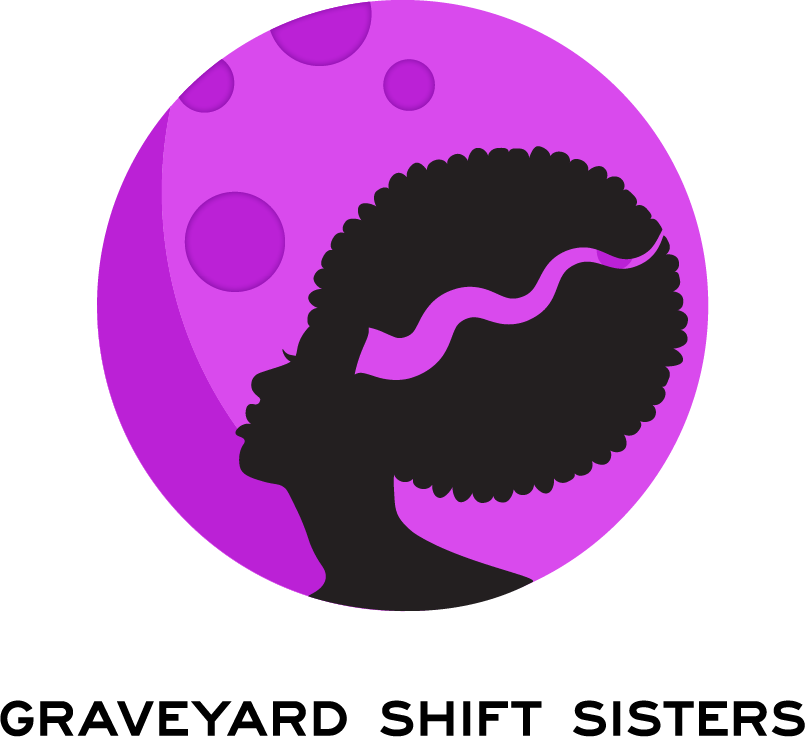Horror Blackademics: The New Black Vampire
Written by Frances Gateward
Genders OnLine Journal, Issue 40 (2004)
Thesis: The construction of the vampiric and their qualities are figures of a creators expression of a personal or shared (cultural) anxiety. From AIDS to women's sexuality, there is nothing that is feared that hasn't been made manifest by some monster or monstrous form on screen. In "historically one of the most racially exclusive" genres, Gateword seeks to examine the direct approach to race in horror along with the intersections of gender and vampirism; how they all work to revise the genre and provide a critique of racial and prejudicial cultural norms.
Examples:
Blacula (1972)
Stands out from other 1970's Blaxploitation fare due to having one of the few Black directors in its genre, William Crain and has a central character in Mamuwalde (Blacula played by William Marshall) with a conflict stems from "the destructive legacies of the slave trade".
Vampirism in Blacula:
"Used to invoke the horrors of slavery and the continued oppression of Black Americans."
Royalty heads Prince Mamuwalde and his wife Luva (Vonetta McGee) travel to Eastern Europe in 1780 to meet with Dracula, hoping to have a discussion that leads to the end of the Trans-Atlantic slave trade, Dracula is unwilling "to renounce the access his class, race, and gender affords him," and as the tension between the three crescendos, Luva is captured and Mamuwalde is enslaved by Dracula's vampiric curse and placed in a coffin that makes the Trans-Atlantic journey.
Blacula looks to reclaim his autonomy:
- Combating the police, symbolic of just one institution that uses racial discrimination for, at times, unjust brute force to subjugate a group of people based on skin color.
- Asking for Tina's (Vonetta McGee again) affections because of her striking resemblance to Luva, "an attempt to regain his pre-vampiric past." Blacula is "one of the first filmic vampires to transform the archetype from one of the solitary, bestial predator to that of a more humanized, reluctant victim."
Comments on "the fears rendered in public health policies concerning race and blood tranfusions throughout U.S. history" as the premise of the film is Dracula's blood transfusion for his comatose wife both revives her and turns her skin dark due to the use of one black woman's blood.
Vampira is a "light comedy," but it cleverly highlights racial Otherness and fantastical attempts to reverse it (physical Blackness). The film as a whole rejects Dracula's motives and celebrates Black popular culture during the time of its release.
Uses vampirism's relationship to feeding and sexuality in order to dichotomize Christian doctrine and punishing the sinful.
Genders monstrosity; relies on uncomplicating the antiquated notions of morality to suggest the opposite is the only thing that will 'save' the Black community. Since 'race films' of the 1910's-1940's were reactions to racism and public policies that argued the inherent inferiority of Black people, the 'Black elite' of sorts turned to opposite definitions imposed upon them to honestly, yet with no sense of nuance, show the lives of Black people. Def By Temptation picks up this tradition, only modern in its setting and circumstances.
Plays on the concept of miscegenation. Blade, as half human/half vampire, rejects/attempts to control his vampiric tendencies and chooses human preservation by fighting against vampires seeking to dominate the human race through murder (which is why, I would assume Gateward is equating vampirism to whiteness in this case).
How vampirism is racialized as whiteness:
Discussion Questions
How does Gateward further assert Blacula as a critique of Black monstrosity? What other tenets are addressed in his legacy as a figure addressing oppressive societal forces?
Name two factors that contributed to the growing interest by film studios to release films written, directed, and centering black people. What set Def By Temptation a part from the multiple black cinema films of the early 1990s?
In what ways does Gateward note the shift of the depiction of the vampire in the late 1990's/early 2000's on film?
What are some of the binaries a character like Blade struggle with and how does he portray a modernized version of the classic movie "tragic mulatto" trope?
Where does Gateward position the black vampire in her conclusion? How does being black and being a monster translate into the real, lived experiences of black/non-white people and how has it been portrayed on screen?
Vampira (1974)
Comments on "the fears rendered in public health policies concerning race and blood tranfusions throughout U.S. history" as the premise of the film is Dracula's blood transfusion for his comatose wife both revives her and turns her skin dark due to the use of one black woman's blood.
Vampira is a "light comedy," but it cleverly highlights racial Otherness and fantastical attempts to reverse it (physical Blackness). The film as a whole rejects Dracula's motives and celebrates Black popular culture during the time of its release.
Def By Temptation (1990)
Uses vampirism's relationship to feeding and sexuality in order to dichotomize Christian doctrine and punishing the sinful.
Genders monstrosity; relies on uncomplicating the antiquated notions of morality to suggest the opposite is the only thing that will 'save' the Black community. Since 'race films' of the 1910's-1940's were reactions to racism and public policies that argued the inherent inferiority of Black people, the 'Black elite' of sorts turned to opposite definitions imposed upon them to honestly, yet with no sense of nuance, show the lives of Black people. Def By Temptation picks up this tradition, only modern in its setting and circumstances.
Blade (1998)
Plays on the concept of miscegenation. Blade, as half human/half vampire, rejects/attempts to control his vampiric tendencies and chooses human preservation by fighting against vampires seeking to dominate the human race through murder (which is why, I would assume Gateward is equating vampirism to whiteness in this case).
How vampirism is racialized as whiteness:
- symbolic figures of enslavement (Blacula)
- bodily violation that passes on genetic enhancements (Blade's mother is bitten while pregnant with him)
- vampire self-definitions of superiority through their innate abilities
- infiltration of institutions of 'law and order' (the police, etc.)
- hierarchies ("pure bloods" to "lesser" vampires who were turned)
- "Daywalker" a term used in Blade to connote vampires that can walk in sunlight, and are the epithet, half-breed.
Discussion Questions
How does Gateward further assert Blacula as a critique of Black monstrosity? What other tenets are addressed in his legacy as a figure addressing oppressive societal forces?
Name two factors that contributed to the growing interest by film studios to release films written, directed, and centering black people. What set Def By Temptation a part from the multiple black cinema films of the early 1990s?
In what ways does Gateward note the shift of the depiction of the vampire in the late 1990's/early 2000's on film?
What are some of the binaries a character like Blade struggle with and how does he portray a modernized version of the classic movie "tragic mulatto" trope?
Where does Gateward position the black vampire in her conclusion? How does being black and being a monster translate into the real, lived experiences of black/non-white people and how has it been portrayed on screen?

